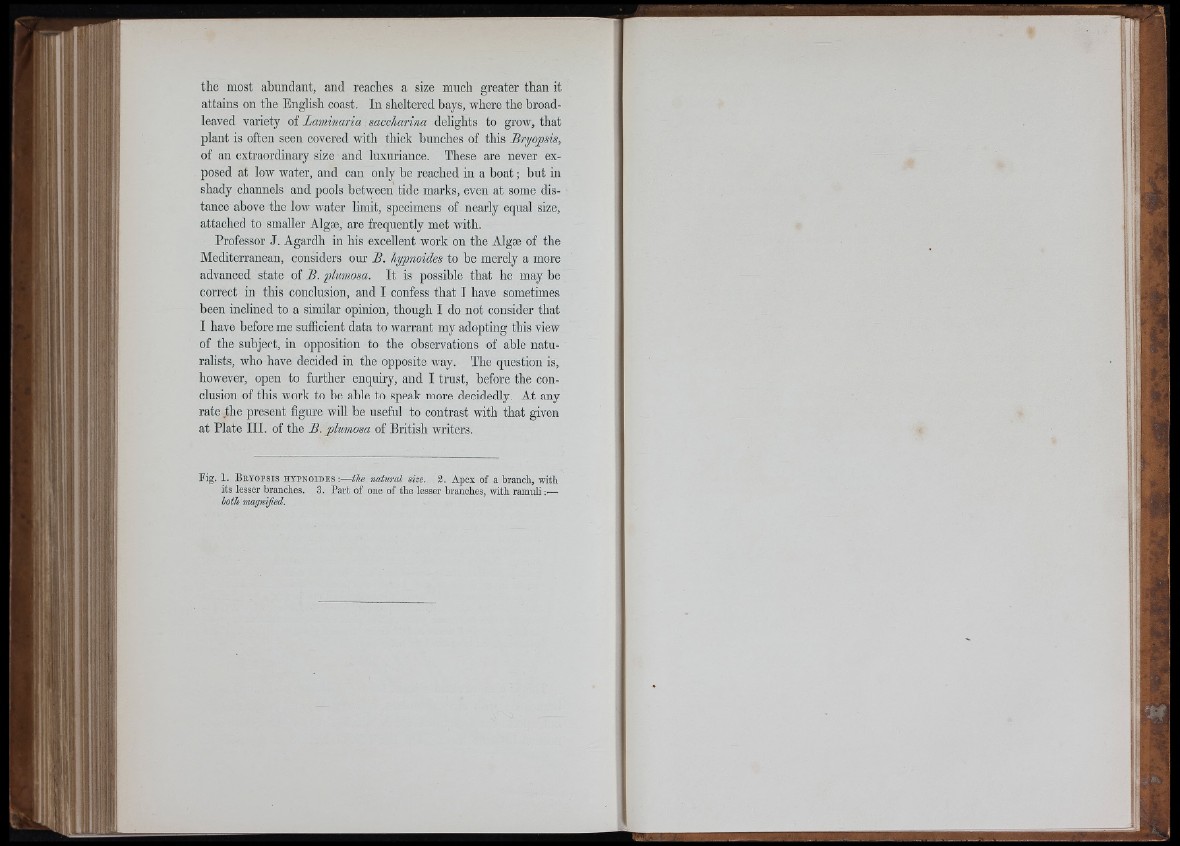
the most abundant, and reaches a size much greater than it
attains on the English coast. In sheltered bays, where the broadleaved
variety of Laminaria saecharina delights to grow, that
plant is often seen covered with thick bunches of this Bryopsis,
of an extraordinary size and luxuriance. These are never exposed
at low water, and can only be reached in a boat ; but in
shady channels and pools between tide marks, even at some distance
above the low water limit, specimens of nearly equal size,
attached to smaller Algai, are frequently met with.
Professor J. Agardh in his excellent work on the Algae of the
Mediterranean, considers our B. liypnoides to be merely a more
advanced state of B. plumosa. It is possible that he may be
correct in this conclusion, and I confess that I have sometimes
been inclined to a similar opinion, though I do not consider that
I have before me sufficient data to warrant my adopting this view
of the subject, in opposition to the observations of able naturalists,
who have decided in the opposite way. The question is,
however, open to further enquiry, and I trust, before the conclusion
of this work to be able to speak more decidedly. At any
rate the present figure will be useful to contrast with that given
at Plate III. of the B. plumosa of British writers.
Fig. 1. B r y o p s is h y p n o id e s :— the natural size. 2. Apex of a branch, with
its lesser branches. 3. Part of one of the lesser branches, with ramuh :■—
botk magnified.